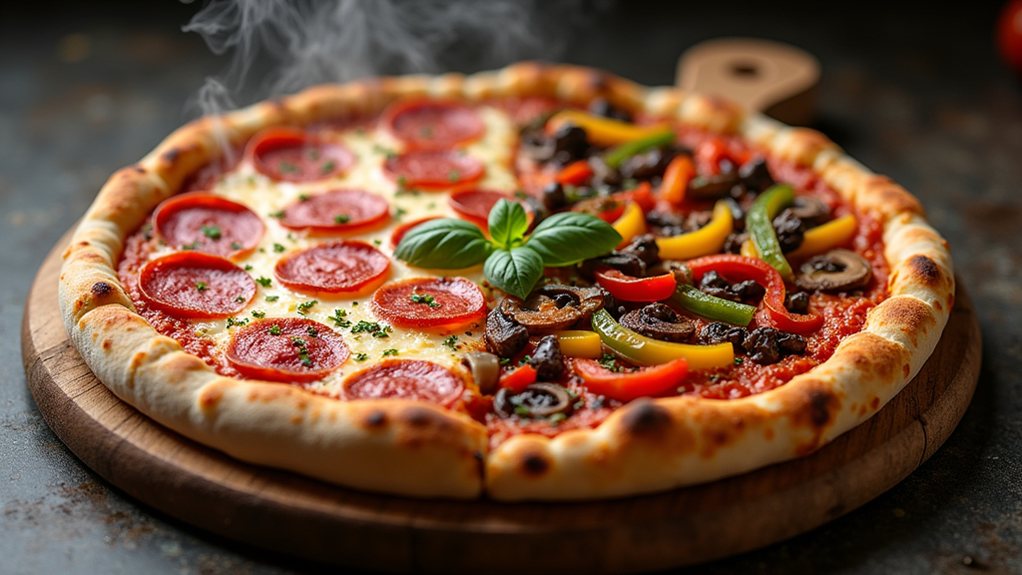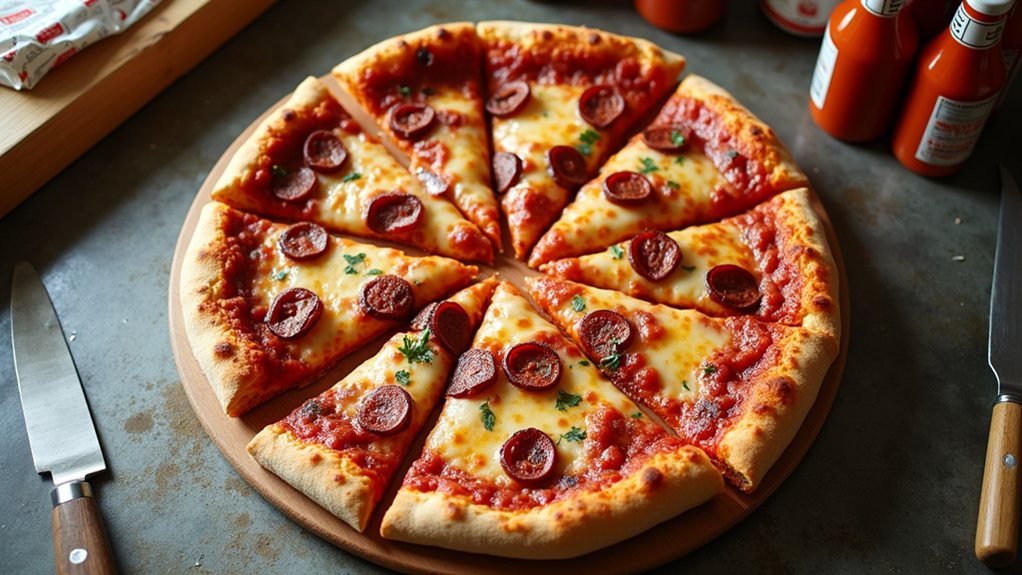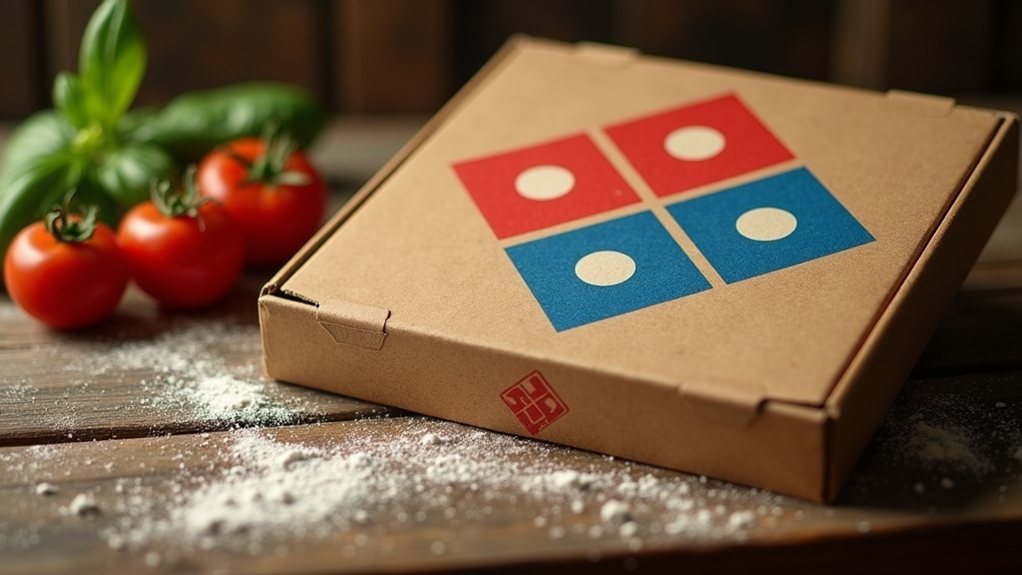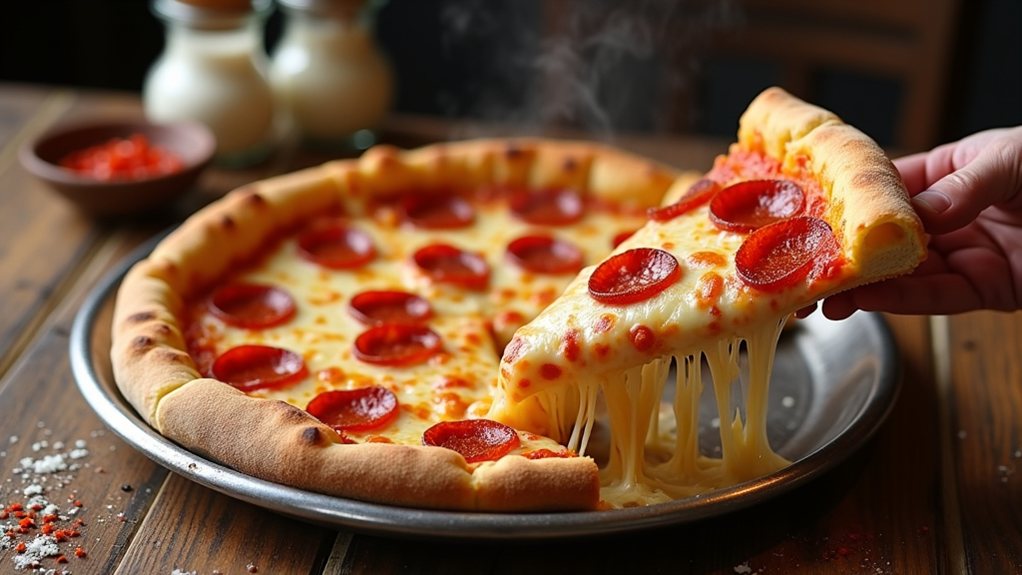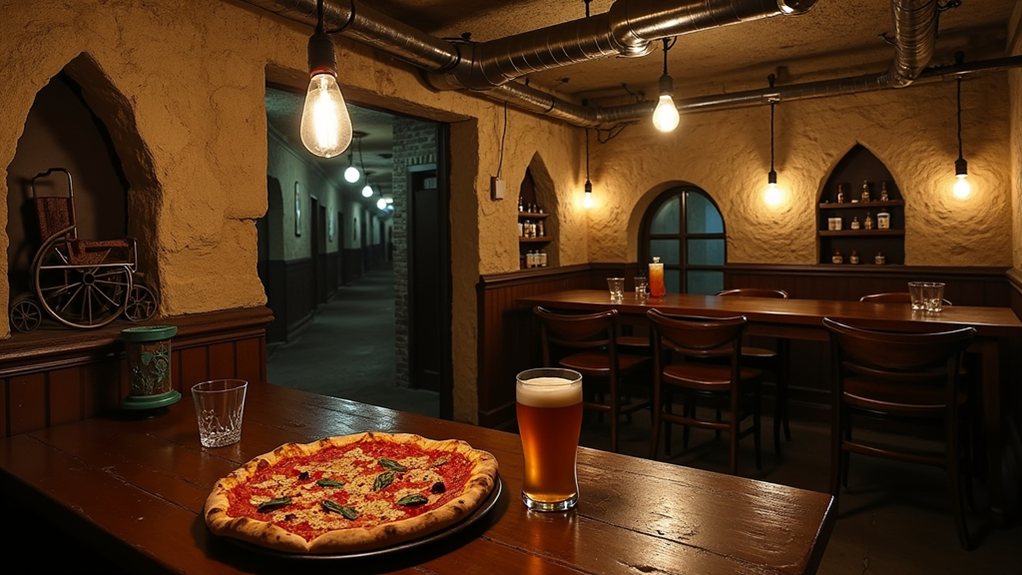Pizza customization represents a culinary art form that combines creativity with personal taste preferences, transforming a simple dish into an individualized masterpiece. The selection process begins with fundamental choices about crust style and sauce type, then progresses through layers of potential ingredients that can include both traditional and unconventional options. Modern pizzerias offer an expanding universe of toppings, from classic pepperoni to exotic items like truffle oil and arugula, setting the stage for infinite flavor combinations.
The Endless Possibilities of Pizza Customization
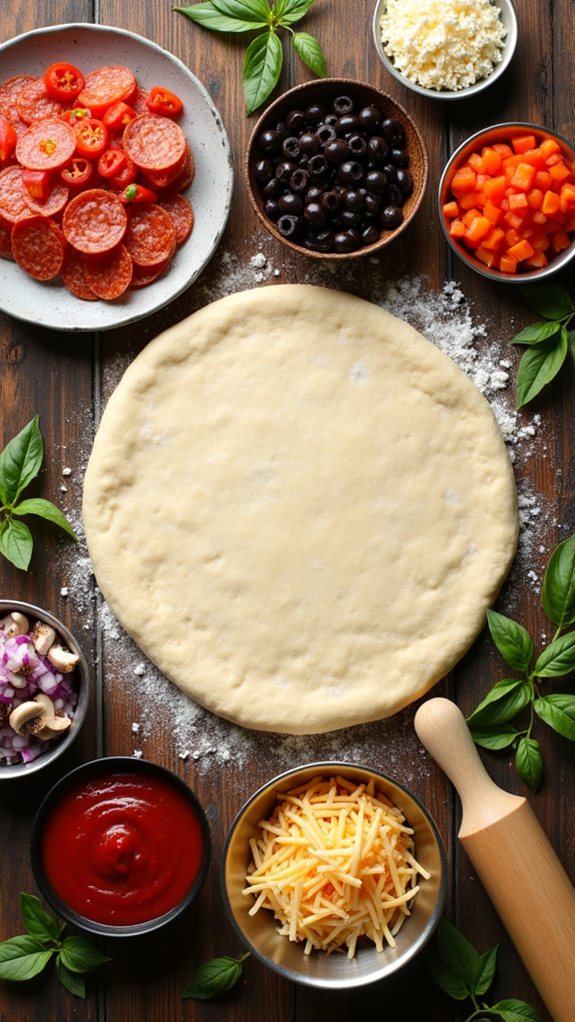
While many foods offer some degree of customization, pizza stands out as one of the most versatile and customizable dishes in modern cuisine.
From thin crust to deep dish, and traditional tomato sauce to innovative alternatives, the foundation alone presents countless possibilities.
Pizza's versatility begins with its base, offering endless options from wafer-thin crusts to thick, hearty foundations and diverse sauce selections.
Each layer offers opportunities for personalization, with different cheeses, vegetables, and proteins creating endless combinations.
The ability to mix and match toppings allows diners to craft their perfect pie, whether seeking classic flavors or daring culinary experiments.
This flexibility in pizza creation guarantees that everyone can design a meal that perfectly matches their tastes and dietary preferences.
Whether opting for regional pizza styles or exploring unconventional gourmet combinations, the art of pizza making continues to evolve across cultures and cuisines.
Essential Vegetable Toppings That Transform Your Pizza
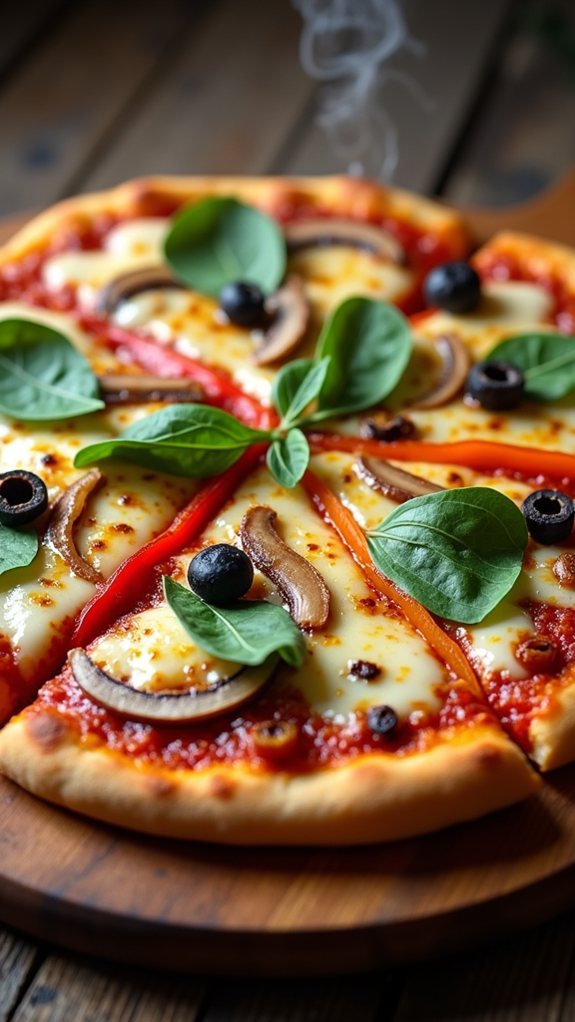
Although meat toppings often dominate pizza conversations, vegetable toppings provide essential flavors and textures that can elevate a pizza from good to extraordinary.
Spinach adds a fresh, nutritious element while complementing other ingredients seamlessly, and black olives contribute a distinctive salty punch throughout each bite.
Bell peppers introduce both crunch and sweetness when they soften during baking, while onions caramelize to create depth of flavor.
For those seeking an earthy dimension, mushrooms offer a satisfying umami taste that pairs exceptionally well with both meat and vegetarian combinations.
These vegetable combinations deliver essential nutrients and fiber while reducing overall saturated fat content compared to meat-based pizzas.
Must-Try Meat Toppings for Pizza Perfection
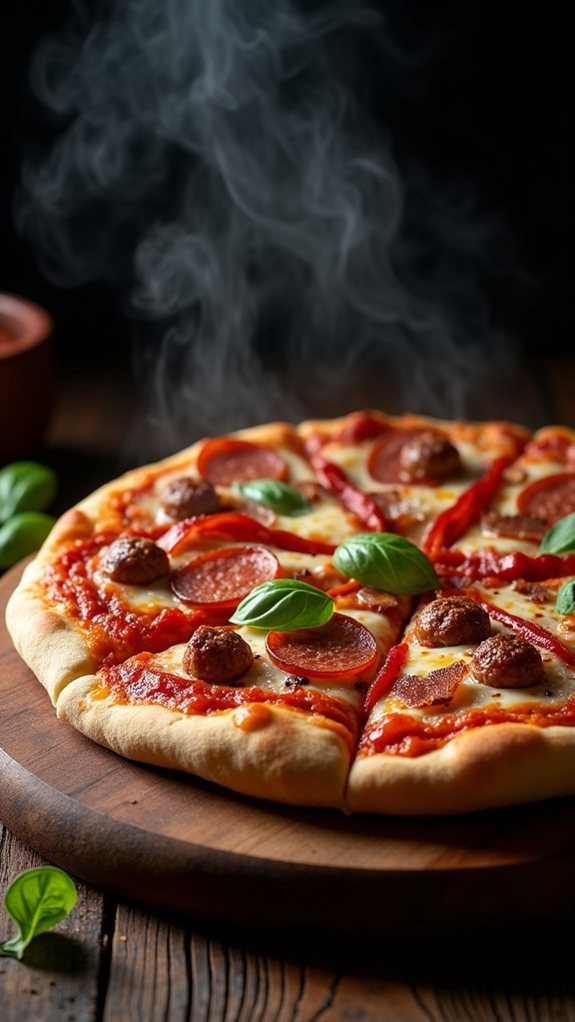
Every great pizza deserves the perfect combination of meat toppings to achieve its full flavor potential.
From classic pepperoni that crisps perfectly at the edges to savory Italian sausage that adds a robust kick, meat toppings transform an ordinary pie into a memorable feast.
Chicken offers versatility, working well with diverse sauce bases, while crispy bacon brings a smoky depth that enhances any combination.
For those seeking the ultimate meat experience, combining different proteins creates layers of flavor, though it's crucial to balance the portions to maintain harmony among all ingredients.
The popular buffalo chicken combination delivers a zesty kick when coated in a spicy sauce blend and paired with blue cheese for an irresistible flavor profile.
The Art of Cheese Selection and Combinations
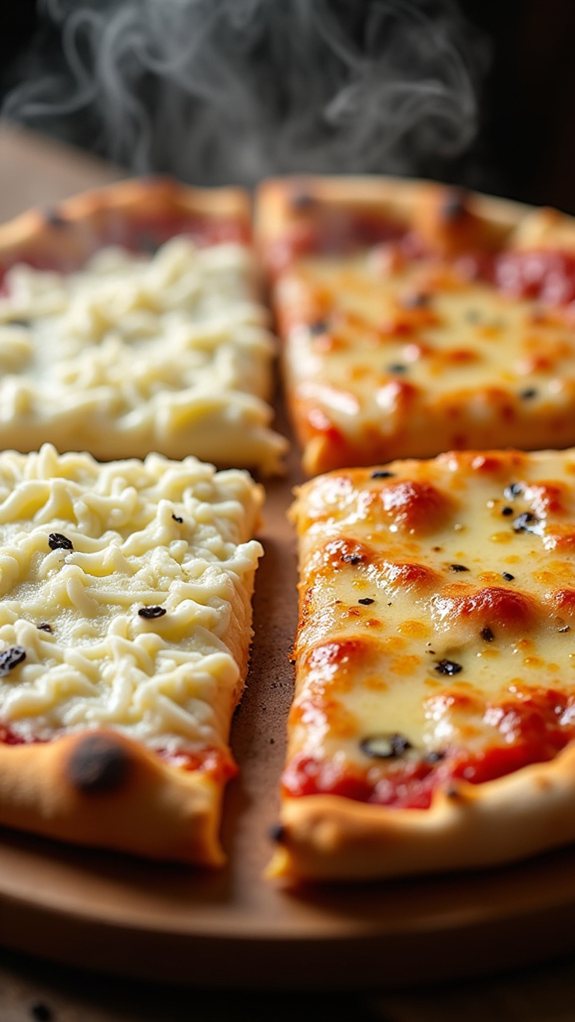
The proper selection of cheese can make or break a pizza's total appeal, taking it from mediocre to magnificent. While mozzarella serves as the foundation for most pizzas, combining different cheese varieties opens up a world of flavor possibilities.
Adding sharp provolone brings tanginess, while creamy ricotta creates pockets of indulgence throughout the pie.
Experimenting with cheese combinations allows pizza enthusiasts to uncover their perfect blend. Some popular pairings include mozzarella with parmesan for extra depth, or gorgonzola with fontina for a more sophisticated profile.
The key lies in balancing flavors and achieving the desired melt factor.
Why Classic Pizza Toppings Stand the Test of Time
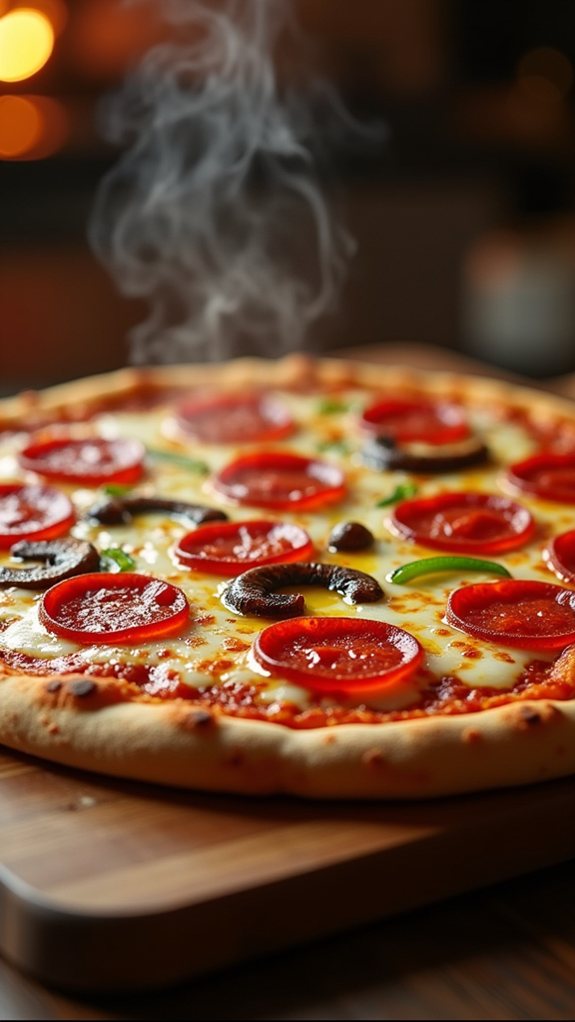
Since their inception in pizzerias across the globe, classic pizza toppings like pepperoni, mushrooms, and bell peppers have maintained their steadfast popularity through generations of pizza enthusiasts.
These time-honored ingredients create a perfect harmony of flavors and textures that consistently satisfy diverse palates. The combination of salty, savory pepperoni with earthy mushrooms and sweet peppers delivers a balanced taste experience that's both familiar and exciting.
Nostalgia plays a significant role in their endurance, as these toppings often remind people of cherished memories, from childhood birthday parties to casual family dinners.
FAQs
Can Pizza Toppings Be Added After the Pizza Is Cooked?
Toppings can be added post-cooking, though they won't melt or integrate with the pizza. Fresh ingredients like arugula, basil, or cold cuts maintain their original texture when added afterwards.
How Many Toppings Are Too Many for a Well-Balanced Pizza?
While a million toppings might sound tempting, most pizza experts suggest limiting to 3-5 toppings for ideal flavor balance and proper cooking. Beyond that, toppings can overwhelm the crust and sauce.
Which Toppings Should Be Placed Under the Cheese Versus on Top?
Meats and vegetables that need thorough cooking should go under cheese, while toppings requiring crispiness like pepperoni, fresh herbs, and delicate vegetables belong on top for ideal texture.
Do Certain Toppings Require Different Cooking Temperatures or Times?
Raw vegetables release moisture at 350°F, while meats need 400°F+ for proper cooking. Delicate toppings like fresh basil should be added last, while dense ingredients require full cooking duration.
What's the Best Order to Layer Multiple Toppings on a Pizza?
Start with sauce, then cheese, followed by meats, vegetables, and delicate toppings last. This layering prevents burning, guarantees even cooking, and creates ideal texture throughout the pizza.
